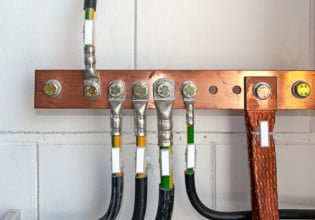Pacific Gas and Electric Co. (PG&E) has unveiled what it claims is the first-ever utility Vehicle-to-Grid (V2G) technology. The demonstration is said to mark a milestone in the development of innovative technologies to make electric vehicles suppliers of electricity to homes and businesses. V2G technology allows for the bi-directional sharing of electricity between Electric Vehicles (EVs) and Plug-in Electric Hybrid Vehicles (PHEVs) and the electric power grid. The technology turns each vehicle into a power storage system, increasing power reliability and the amount of renewable energy available to the grid during peak power usage.
PG&E’s prototype PHEV, converted in partnership with the Bay Area Air Quality Management District and Energy CS, adds a lithium ion battery to a traditional Toyota Prius. The additional battery capacity increases the vehicle’s ability to run completely on electricity. PG&E has demonstrated the reverse flow of energy from the vehicle back to the outlet. Although PG&E’s PHEV is currently in prototype form, the company sees the possibility that its customers will be able to take advantage of V2G technology and PHEVs by providing power to their home or businesses during hot summer days to avoid high energy prices and help prevent outages.
In addition to reducing energy costs, V2G technology could provide the ability for customers to sell back energy to the utility during hot afternoons when demand is highest and most costly to avoid blackouts. During these periods, energy is worth several times more than overnight when vehicles charge. Vehicle owners will select a price threshold at which they are willing to sell energy, and when the price reaches this point the utility will be able to automatically draw energy out of the vehicle, leaving enough for the drive home if necessary. The utility’s customers would then earn credit in the amount of energy used by the utility toward their monthly energy bill.
V2G technology also serves as a way to increase the amount of renewable energy used during peak energy hours. During times of maximum demand, electrical utilities have to buy power from expensive and less efficient fossil fuel power generating sources. PHEVs will charge their batteries at night when energy is inexpensive and is generated with a larger percentage of renewable resources. When demand is high the next day, instead of turning on a fossil-fuel based generator, the utility can purchase the renewable energy stored in the vehicle batteries.






